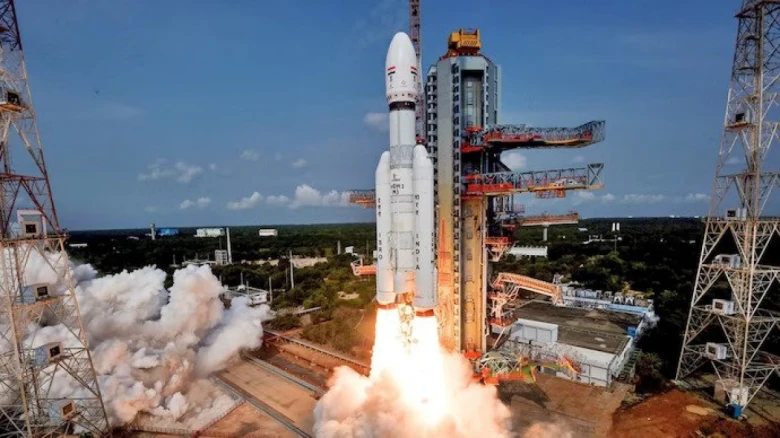If all goes according to plan for the rest of the mission, the mission will safely land between August 23 and 24 close to the moon's under-explored south pole.
Digital Desk: More than three weeks after its launch, Chandrayaan-3, India’s latest space mission, entered the orbit of the moon, the nation's space agency stated on Saturday.
Chandrayaan-3, which means "moon vehicle" in Sanskrit, was "successfully inserted into the lunar orbit," according to the Indian Space Research Organisation (ISRO).
If all goes according to plan for the rest of the mission, the mission will safely land between August 23 and 24 close to the moon's under-explored south pole.
Four years ago, India's last attempt to do so was unsuccessful because ground control lost contact just before landing.
Sanskrit word "Vikram" signifies "valour" in Chandrayaan-3, which was created by ISRO. Pragyan, the Sanskrit word for "wisdom," is the name of the rover.
It is a major feat for the nation, which has managed its ambitious aerospace plan on a comparatively small budget. Before now, only China, the United States, and Russia had successfully completed a controlled landing on the moon's surface.
The mission's $74.6 million price tag is significantly lower than those of other nations, which is a credit to India's frugal space engineering.
According to experts, India can keep prices down by utilising and adapting current space technology, as well as by hiring a large number of highly competent engineers who make a small fraction of their foreign counterparts’ wages.
The manned Apollo missions of the 1960s and 1970s arrived on the moon in a matter of days, whereas the Chandrayaan-3 spacecraft took far longer to get there.
The probe orbited the Earth five or six times elliptically to gain speed because the Indian rocket it was launched on was significantly less powerful than the Saturn V rocket utilised by the United States, and it was then put on a month-long lunar mission.
If the landing is successful, the rover will roll off Vikram and move on to the neighbouring lunar region, taking pictures that will be sent back to Earth for processing.
One lunar day, or 14 days on Earth, is the rover's mission lifespan.
According to ISRO chief S Somanath, his engineers meticulously examined the data from the previous unsuccessful mission and made every effort to correct the glitches.
Since it sent its first probe into lunar orbit in 2008, India's space project has significantly expanded in scope and momentum.
The ISRO launched 104 satellites in a single mission three years after being the first Asian country to circle Mars with a satellite in 2014.
By the end of the year, a three-day manned flight into Earth's orbit is planned as part of the ISRO's Gaganyaan (Sanskrit for "sky craft") programme.
By launching private payloads into orbit for a small fraction of the price of rivals, India is also attempting to increase its 2 percent market share in the global commercial space market.

Leave A Comment